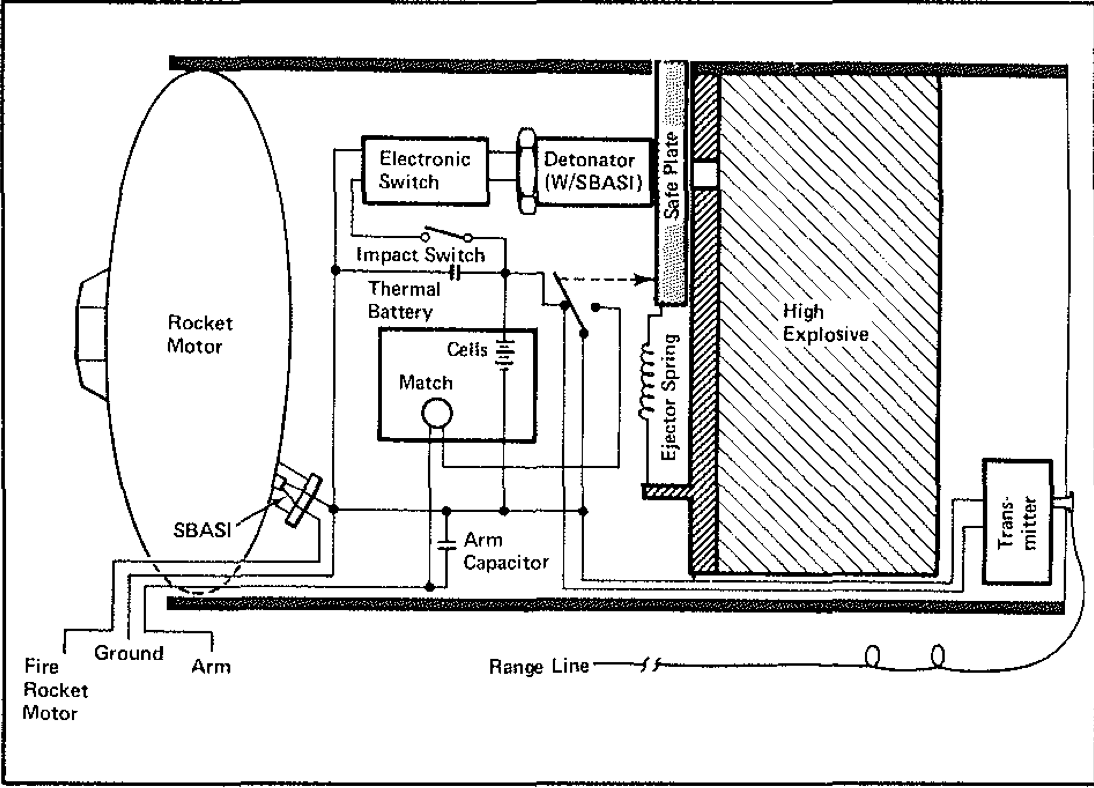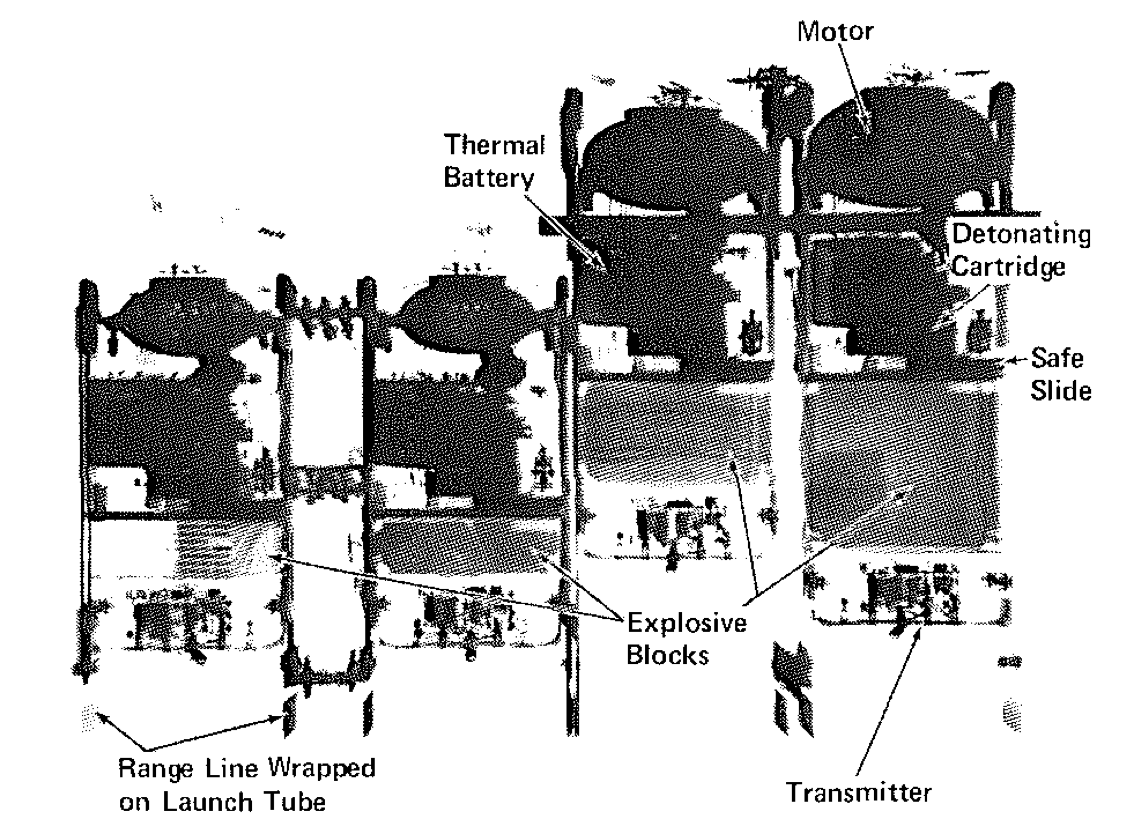It may seem bizarre, but Rocket Propelled Grenades were taken to the moon on a couple of the Apollo missions to the moon in the 1970s. Three were fired, and five were abandoned. So there is an interesting EOD task outstanding on someone’s operational docket for a future mission. This is the surprising story.
One of the ambitions of the Apollo project was to understand the geology of the Moon. Accordingly, a number of passive and active seismic experiments were planned. The active seismic experiments were mounted during Apollo 14 , Apollo 16 and Apollo 17. The active component of the experiments on Apollo 14 and 16 had two parts. Both involved placing ground sensors and then using explosives to create a shock waves. The first experiment was relatively small scale, using a hand-held “thumper” which fired small cartridges to impart a small shock wave to the surface of the moon, which were then detected by the sensors. It is the second experiment that I find more interesting however. For this experiment a number of rocket propelled explosive devices containing varying amounts of explosives were used, and the launch initiation was radio-controlled, with the impact causing the detonation when they struck the moon. In much of the documentation the system is called a mortar but elsewhere the charges are referred to as rocket propelled charges or grenades. It’s semantics, and doesn’t really matter. But what they were innovative and relatively complex explosive charges designed to be launched by radio signal from a baseplate, and impact the moon surface some distance away, detonating to send a distant shockwave back to the sensors.
It’s worth considering the fundamental differences that launching a rocket/mortar/grenade provides on the surface of the moon that don’t occur on the surface of the earth. There is no atmosphere so there is no need to streamline the projectile. Also there is only a fraction of the gravity. So trajectory calculations are very different and hence design parameters of the munition quite different. Calculating the range tables would have taken some interesting but not difficult calculations.
As far as I can make out the grenade launcher/mortar system was identical on both Apollo 14 and 16. The four explosive devices on each system were set to fly 150, 300 900 and 1500m but the explosive charge was not the same across the four projectiles – but rose with the range. The explosive charge weights of the grenades were 0.1, 0.3. 0.6 and 1.0 lbs of explosive consecutively. Unsurprisingly, there were multiple safety mechanisms in the systems and the experiment was designed to be initiated by earth-bound technicians and scientists after the astronauts had departed back to Earth. So the astronauts’ job was to set the ground sensors, put the launch system in place and level it appropriately and then “stand well back” by a few million miles.
For the Apollo 14 mission the launcher was placed in a sub-optimal position due to a crater, and the experiment was abandoned because of concerns that the dust from launch of the projectiles would cover other experiments. This surprises me since the lunar module itself contained a much bigger rocket and surely threw its own dust much more widely. So there are four unarmed, unfired explosive projectiles sat in launch tubes near the Apollo 14 landing site waiting for some EOD operator to sort them out. Good luck with that.
For the Apollo 16 mission, although there were problems setting up the launcher, the system was fired, launching three of the four projectiles. On the launch of the third device, the base plate tipped over so the fourth remained unlaunched. Our intrepid Space Force EOD operator of the future should consider carefully the arming state of this abandoned device. Not a place you want to have an ammunition incident.
The design of the mortars and associated system is particulate interesting technically. I have covered the varying charge weights above. Clearly it was important to know the velocity of the projectile after launch and this was calculated by a a 25ft stainless steel break-wire line with a copper electrical cables wrapped around that which was attached to the projectile and which broke after launch, one immediately and one at 25 ft allowing its velocity to be calculated. The angle and pitch of the launching platform was also recorded, and also on each projectile there was a radio device transmitting the time of flight. So the angles, speed at launch and the time of flight of each missile were were all known. Quite a complicated little munition with interesting safety features. The calculated range was expected to be accurate with 5%. Each grenade was less than 3 inches across and the larger devices about 6 inches long, the smaller 4 inches long. They were mounted on the base plate in a bank of 4. Here’s a circuit diagram of the grenade, which shows some interesting design features – including a spring loaded blanking plate isolating the detonator from the main charge. This steel plate is ejected by the action of the spring as the explosive device leaves the tube, allowing direct passage from the detonator to the main charge and also releasing a safety microswitch. Some of you will have seen bore-constrained spring-actuated safety measures on some earth bound systems. There was an omni-directional impact sensor to cause the detonation and a thermal battery to power both the 30 Mhz transmitter and the initiation system.

The mortars were designed to be launched at 45 degrees. The rocket motor is very short duration, and indeed is designed to have been fully burnt-out at less than 10 milliseconds, before the device has left the launch tube – another reason for the vagueness in terming this a rocket or a mortar, but note that this is fired basically from a tube that is open ended at both ends, making this in my mind a rocket propelled grenade, nonetheless. I think this was chosen (rather than a closed tube mortar) to make an overall lighter system.
I jumped up to the moon last week and managed to get this X-ray of the Apollo 14 system ;- )

All this is useful information for our imaginary space-suited EOD operator. I think the answer is “blow in place”. :- ). I understand that the 3 grenades that functioned provided useful results and the shockwaves of their detonation were detected.
Apollo 17 also used eight radio controlled explosive charges (these not intended to be launched but placed) to conduct seismic experiments. These were small 57 g charges that were detonated by radio control when the astronauts were halfway back to earth, and had been manually placed at distances away from the landing site and the sensors.

Author
Just because some people have been asking… and also because its interesting… the last time I saw a bore-constrained spring-loaded safety detent on a recoilesss grenade was a Provisional IRA “PRIG” grenade, in the 1990s. Quite a jump, literally between that and this device on the moon. Peculiar.
The Apollo 13 landing module provided a good seismic source when it crashed into the moon. I do not recall the details but read there had been earlier seismic experiments with the Apollo program.
Thanks for this fascinating article. Is it possible that some malicious actor could trigger the devices from Earth by spoofing a firing code?
Author
Might be, but the thermal battery may have degraded.